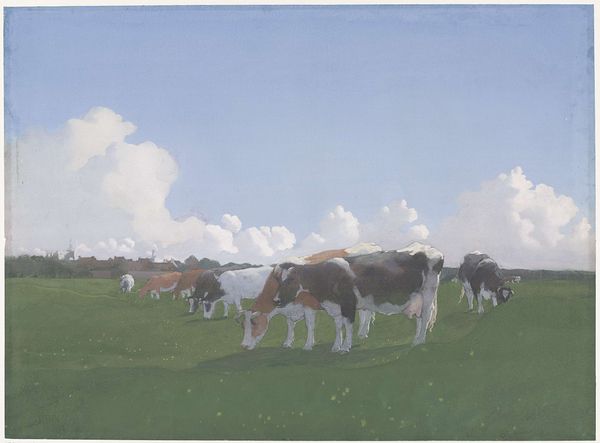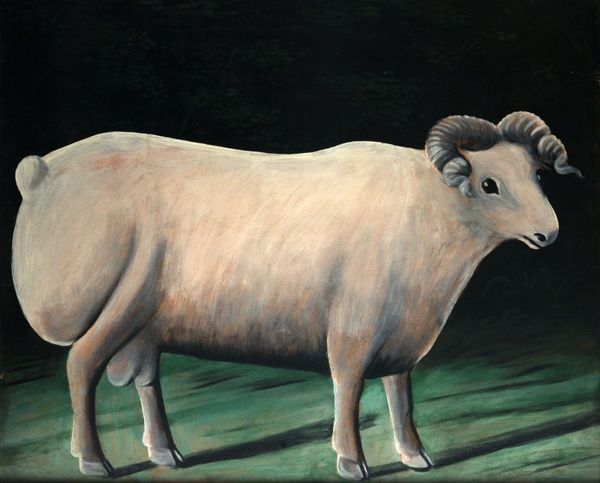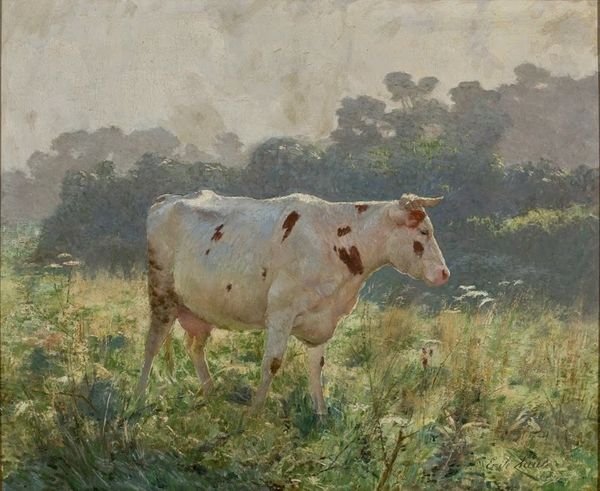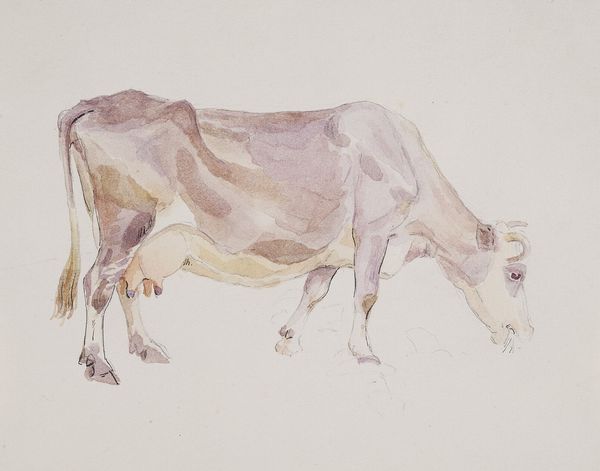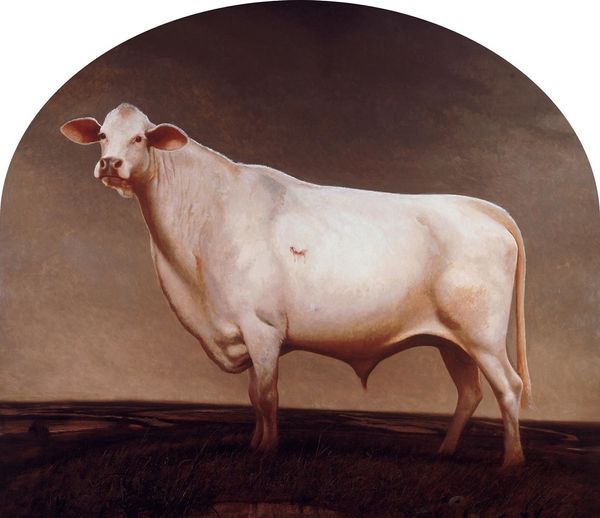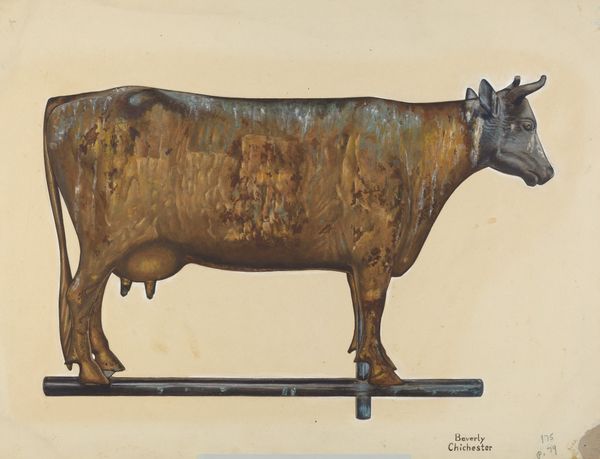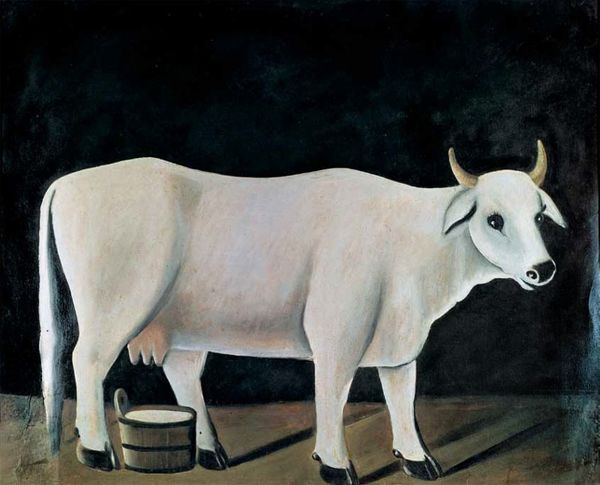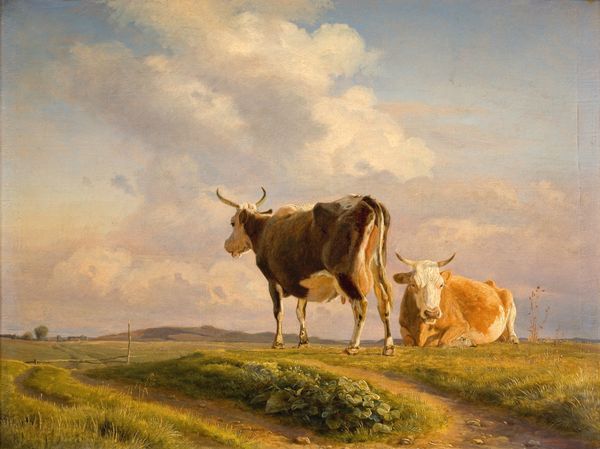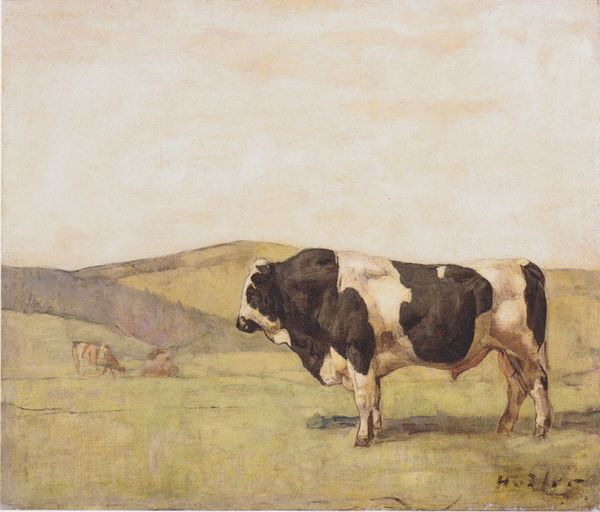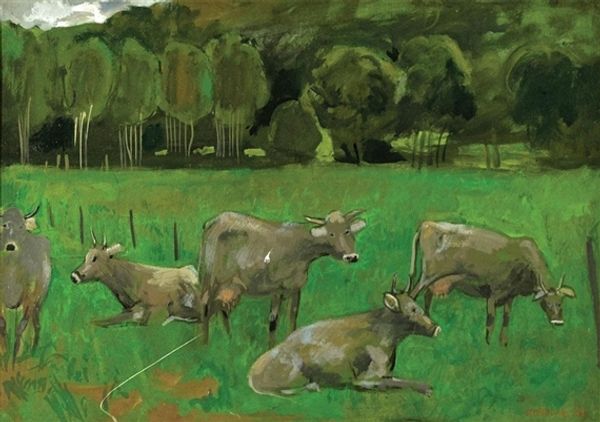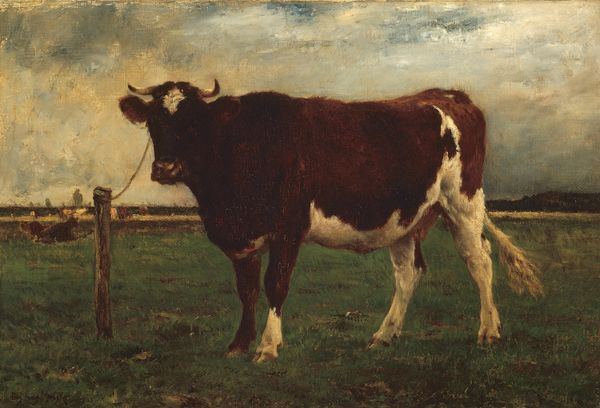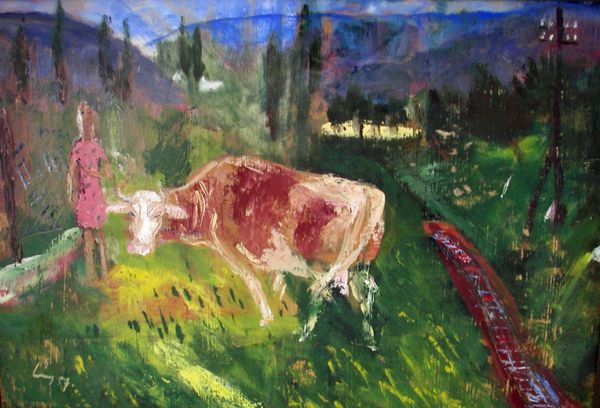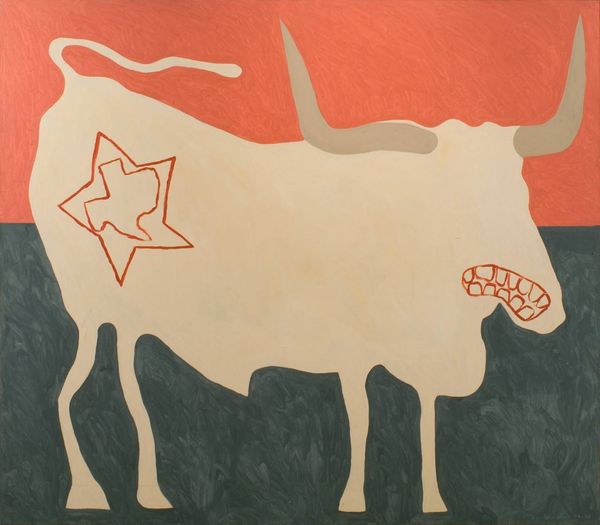
#
abstract painting
#
possibly oil pastel
#
oil painting
#
acrylic on canvas
#
animal portrait
#
painting painterly
#
animal drawing portrait
#
watercolour illustration
#
surrealist
#
watercolor
Dimensions: overall: 50.7 x 63 cm (19 15/16 x 24 13/16 in.) framed: 58.9 x 72.4 x 6 cm (23 3/16 x 28 1/2 x 2 3/8 in.)
Copyright: National Gallery of Art: CC0 1.0
What is ‘naïve art’? The term usually refers to art created by artists without formal academic training. It’s often associated with simple compositions and forms. Naïve art can be experimental and exciting, as its creator is not bound by traditional educational practices. 🎓 In this depiction of a large bull from 1876, the artist has used an unrealistic scale and one-dimensional background. This subverts traditions of precise perspective, and rejects the emphasis on realism that was reproduced in the official art academies of the nineteenth century. The lack of naturalism creates a pleasant and dreamlike sense which is reinforced by the pale pink glow of the sky. 🌅 The landscape is flat and idealised. The bull appears almost the same size as the tree on the left of the painting, and its legs are unrealistically short. Take a look at its front legs… they definitely couldn’t support its weight in real life! Yet the creature is impressive and mighty – we at once understand that this is a fine animal. 🐄 ‘Prize Bull’ (1876) feeds into a tradition of displaying animals as status symbols. Whoever owned this cow was certain to have been wealthy, and may have commissioned H. Call to paint it as an immortalisation of their prosperity. Little is known of H. Call, and this is the only work attributed to the artist by the National Gallery of Art. How mysterious! 👀 How does this painting compare to the celebrated works of the day? The art scene was still dominated by the European academies by the 1870s, and styles of Neoclassicism and Romanticism were influential. These styles insisted on idealism, realism, and harmonious compositions. Modern art movements, such as Impressionism, were also beginning to develop. Do you think this painting sets the tone for the move away from naturalism that would continue throughout the last decades of the century? 💭🖼️ Editor: Lucy Jude Grantham
Comments
No comments
Be the first to comment and join the conversation on the ultimate creative platform.
